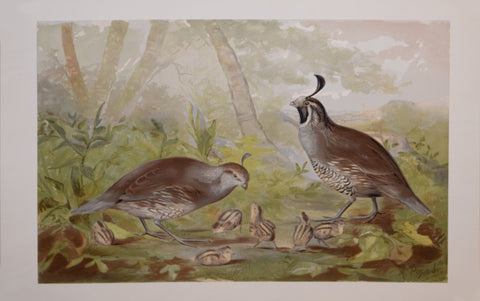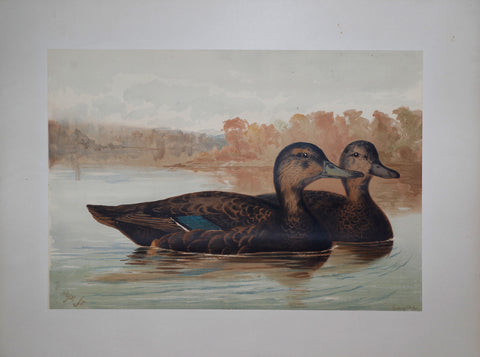
Mark Catesby (1683-1749), T44-The Painted Finch
Mark Catesby (1683-1749)
T44-The Painted Finch
from Natural History of Carolina, Florida and the Bahama Islands..., Volume 1
Published, London, 1731-43, First edition
Engraving with hand coloring
Image size: 20 3/4 x 14 1/4"
Ref: Anker, Bird Books and Bird Art, 95
Currently known as the painted bunting, Passerina cyanea and loblolly bay, Gordonia lasianthus*, Catesby described these subjects as follows:
FRINGILLA TRICOLOR.
The Painted Finch.
This weighs nine Penny weight, and is about the bigness of a Canary Bird. The Head and upper part of the Neck, of an Ultramarine blue. The Throat, Breast and Belly of a bright Red: The Back green, inclining to yellow. The Wings are composed of green, purple and dusky red Feathers: The Rump red: The Tail dusky red with Mixture of Purple. Tho' a particular Description may be requisite, in order to give the more perfect Idea of this Bird, yet its Colours may be comprised in Three: The Head and Neck are blue; the Belly red, and the Back green. Its Notes are soft; but have not much Variety. They breed in Carolina, and affect much to make their Nests in Orange-Trees. They do not continue there in Winter; nor do they frequent the Upper-parts of the Country. I never saw one fifty Miles from the Sea. Tho' the Cock is so elegant, the Hen is as remarkable for her plain Colour, which is not unlike that of a Hen-Sparrow, but with a faint Tinture of Green.
His Excellency, Mr. Johnson, the present Governour of South-Carolina, kept four or five of these Birds (taken from the Nest) in Cages two Years; in all which Time the Cocks and Hens varied so little in Colour, that it was not easy to distinguish them. I have likewise caught the Cock and Hen from their Nest, and could see little difference, they being both alike brown. How many Years it is before they come to their full Colour, is uncertain. When they are brought into this cold Climate, they lose much of their Lustre, as appear'd by some I brought along, with me. The Spaniards call this Bird Mariposa pintada, or the Painted Butterfly.
Alcea Floridana quinque capsularis Laurinus foliis, leviter crenatis, seminibus coniferarum instar alatis, Pluk. Amalth. p. 7. Tab. 352.
The LOBLOLLY BAY.
This is a tall and very straight Tree, with a regular Piramidal shaped Head. Its Leaves are shap'd like those of the commonl Bay, but serrated. It begins to blossom in May, and continues bringing forth its Flowers the greatest part of the Summer. The flowers are fixed to Foot-stalks four or five Inches long; are monopetalous, divided into five Segments encompassing a Tuft of Stamina, headed with yellow Apices; which Flowers in November are succeeded by a conic Capsula having a divided Calix. The Capsulawhen ripe opens and divides into five Sections, disclosing many small half winged Seeds. This Tree reatins its leaves all the Year, and grows only in wet Places, and usually in Water. The Wood is somewhat soft; yet I have seen some beautiful Tables made of it. It grows in Carolina; but not in any of the more Northern Colonies.
We Also Recommend





